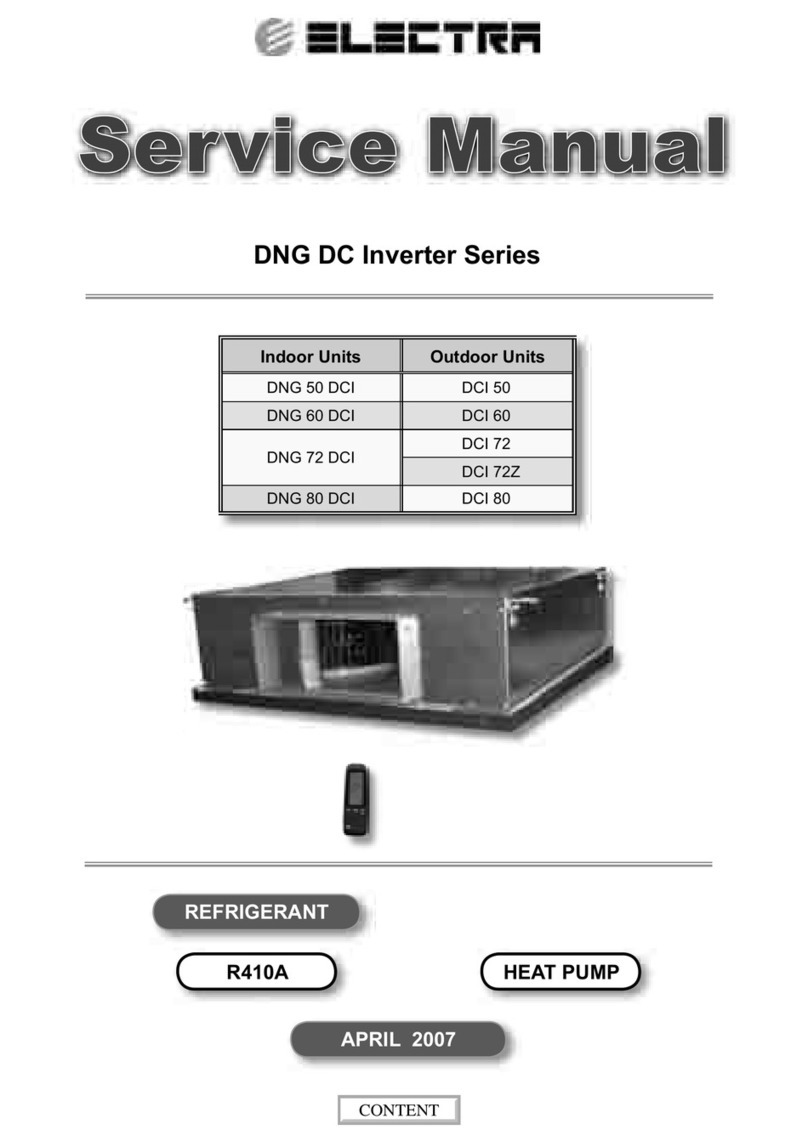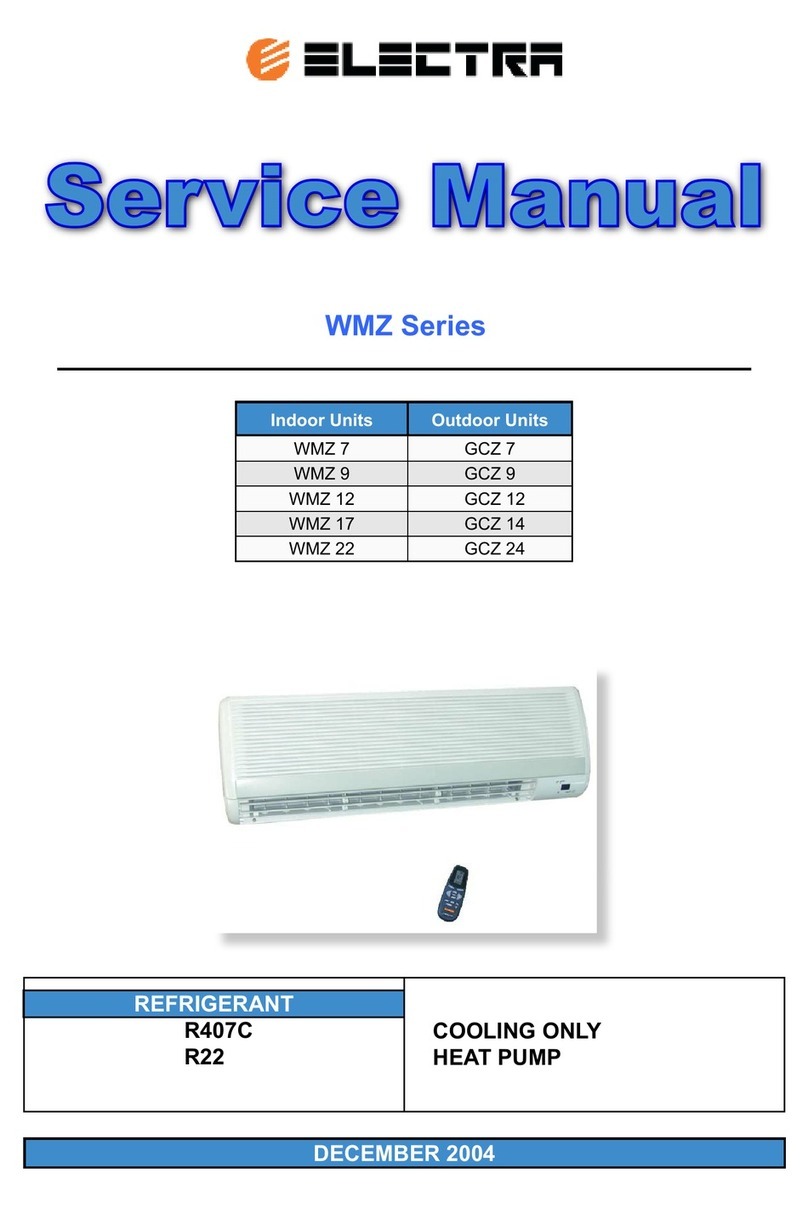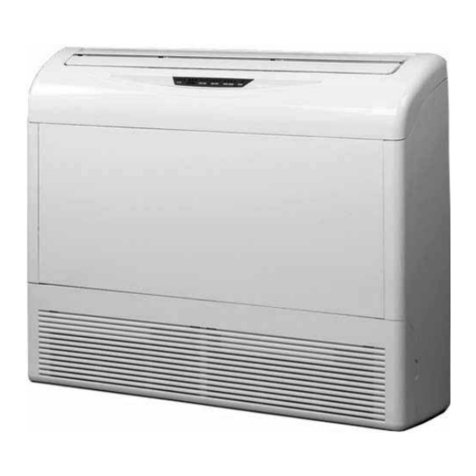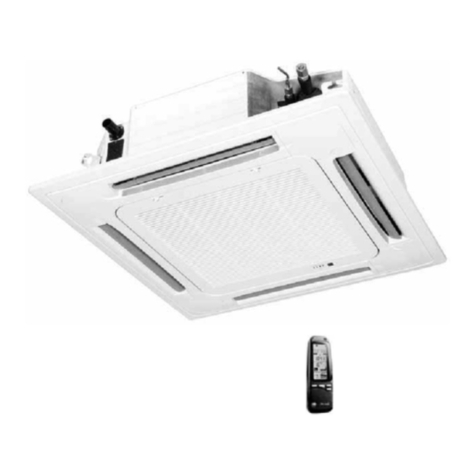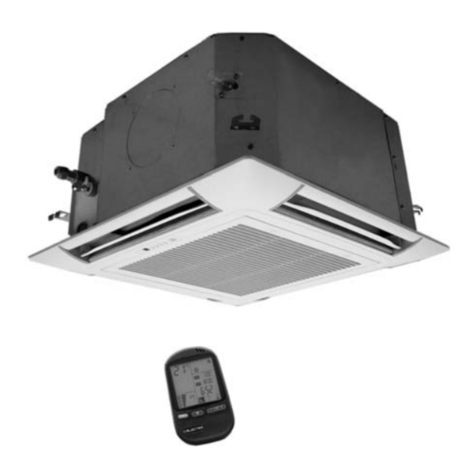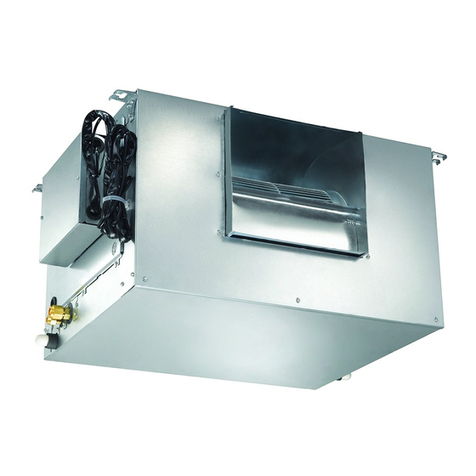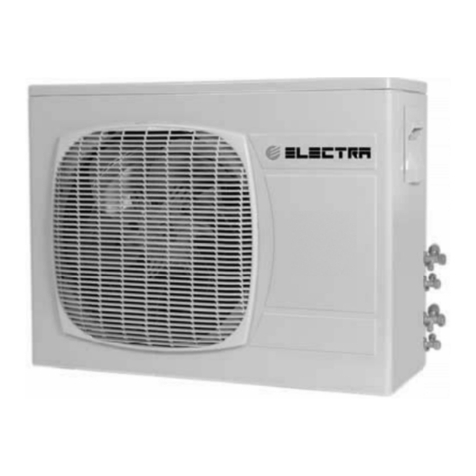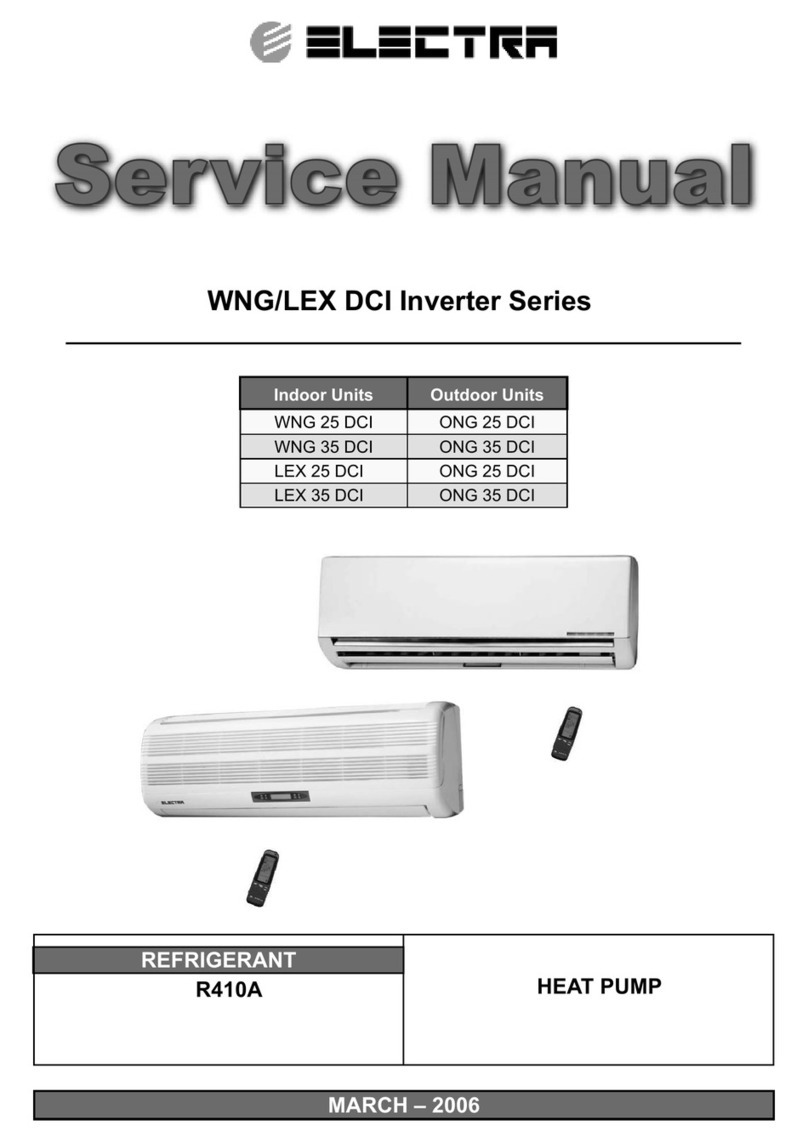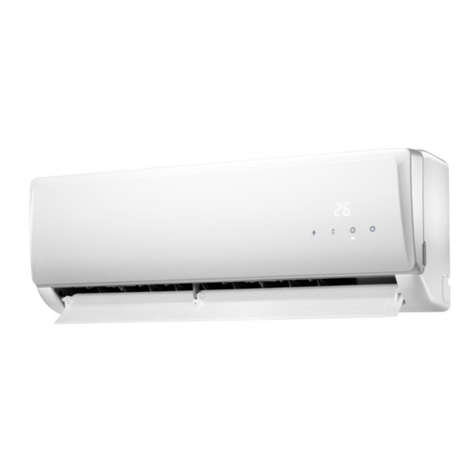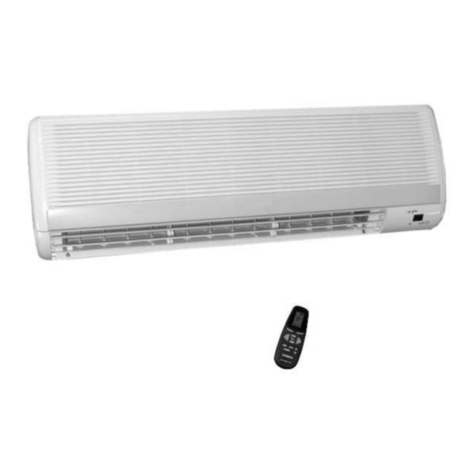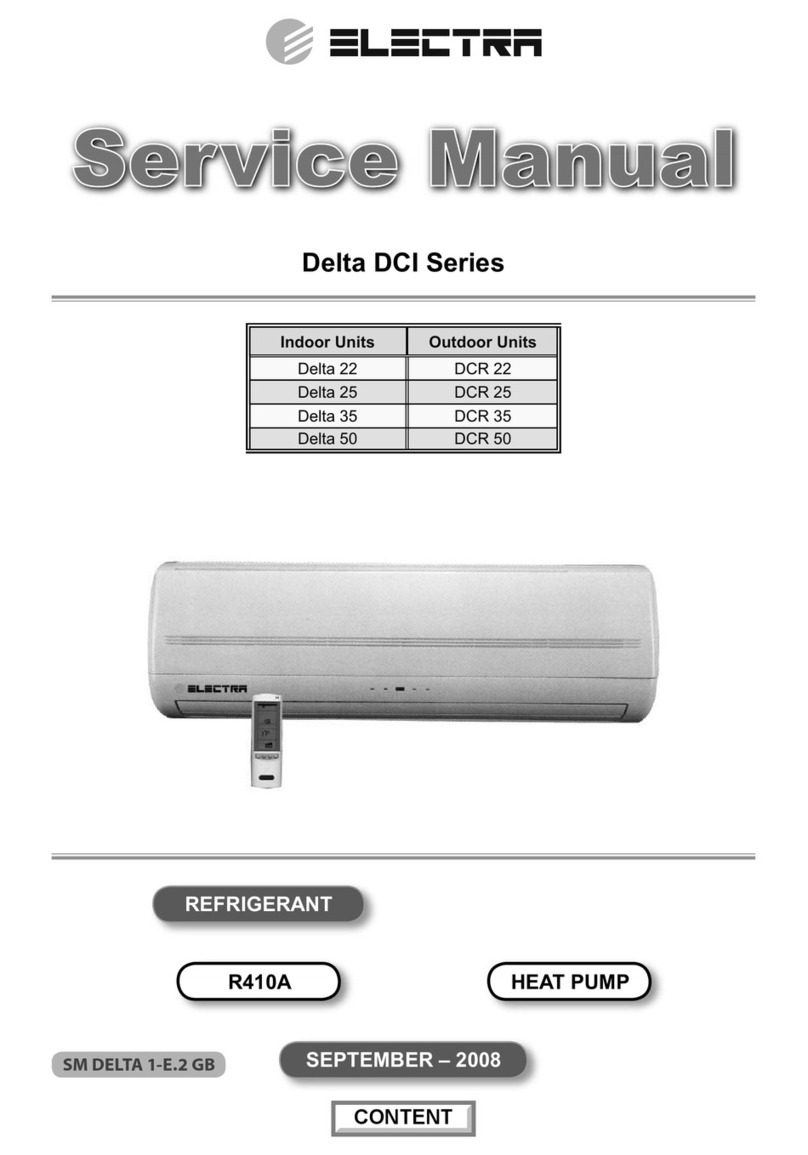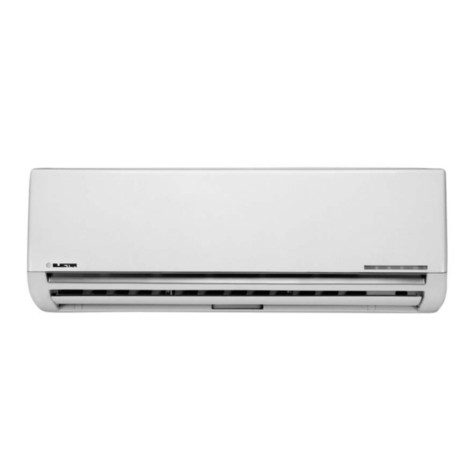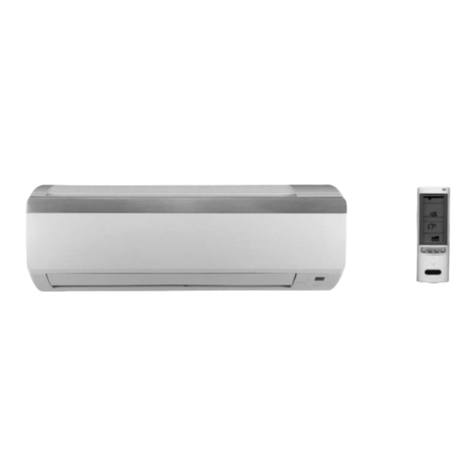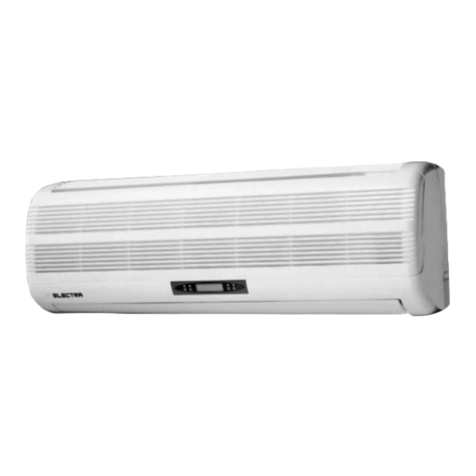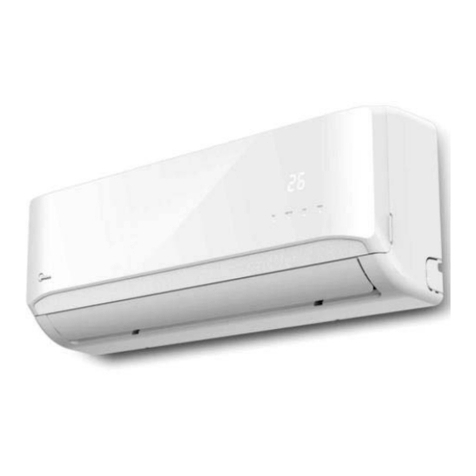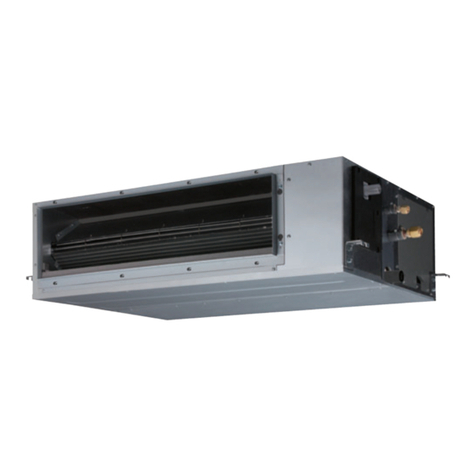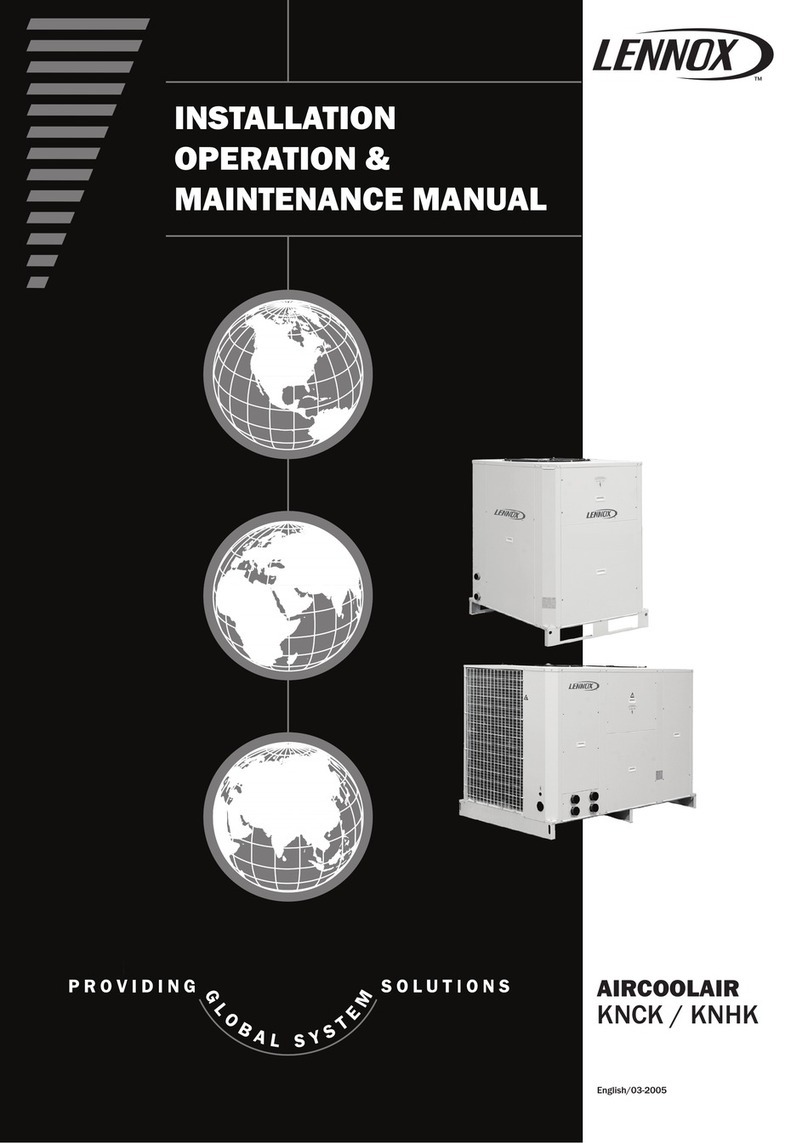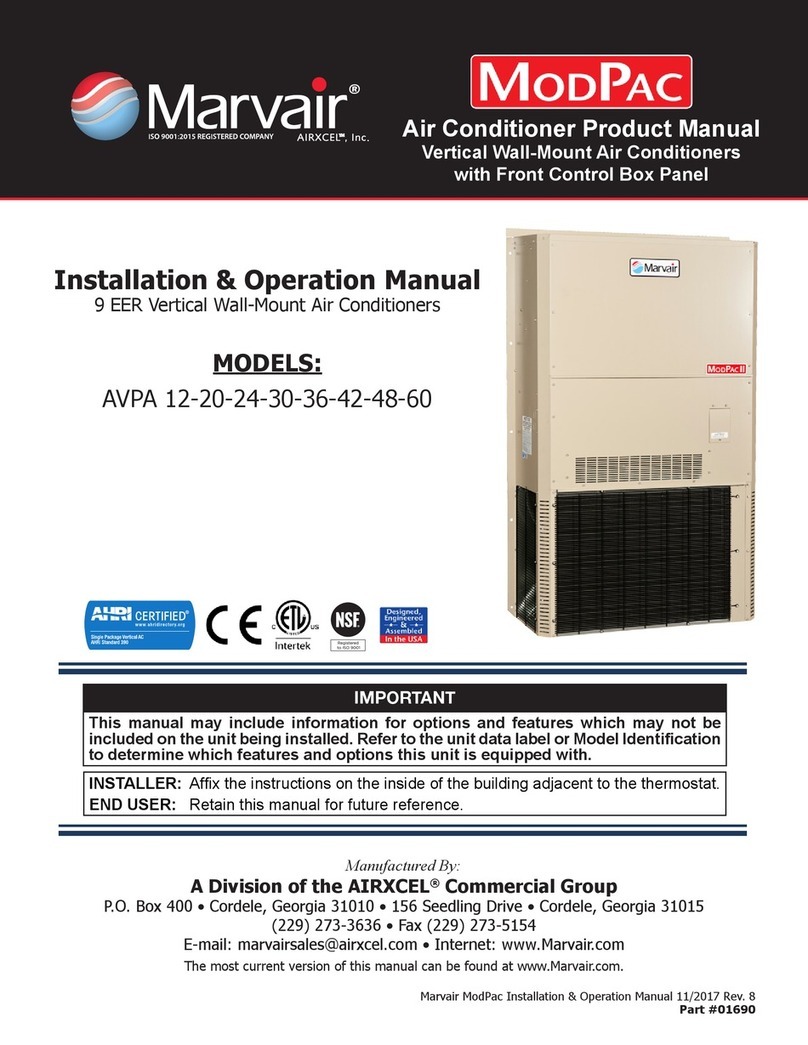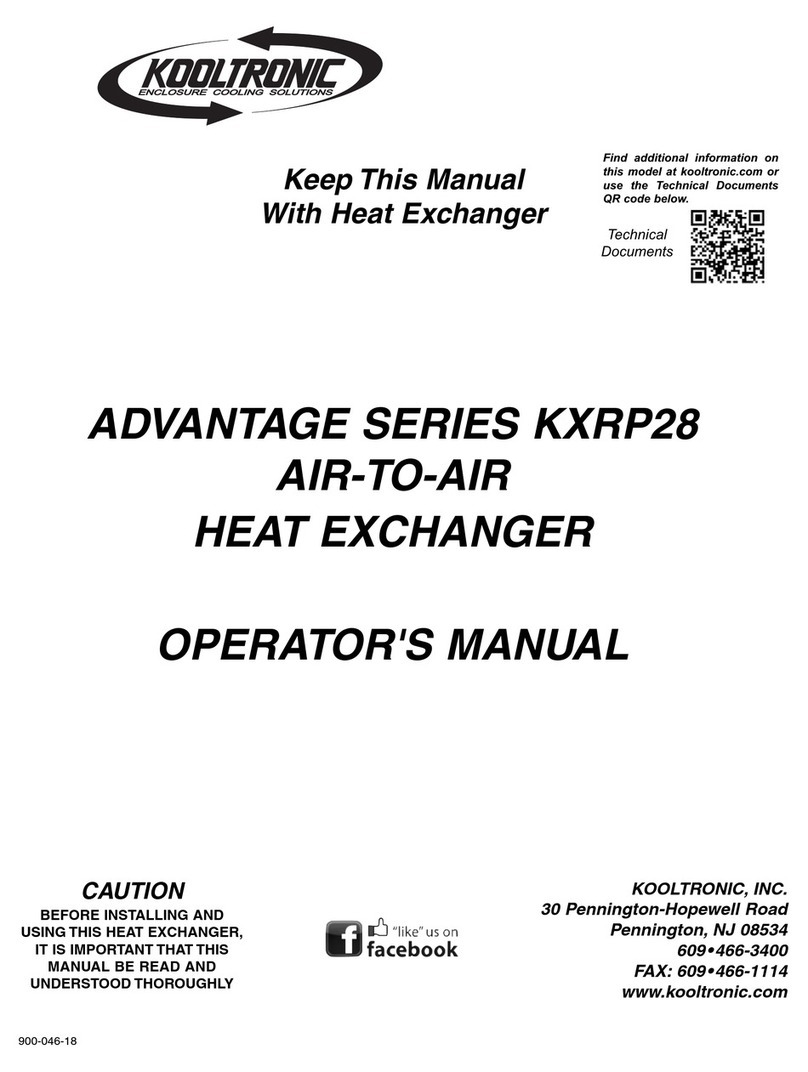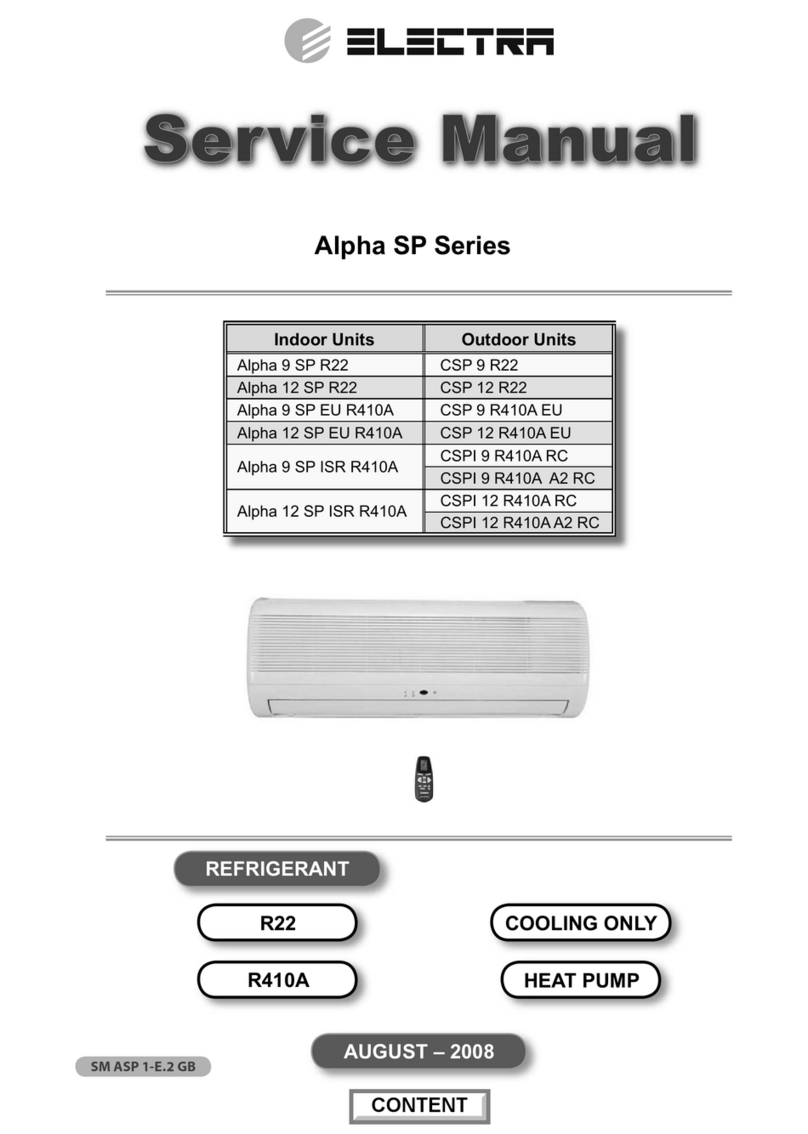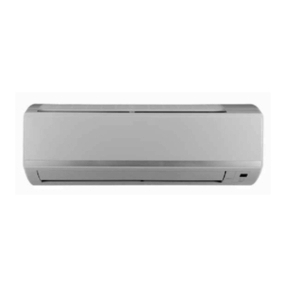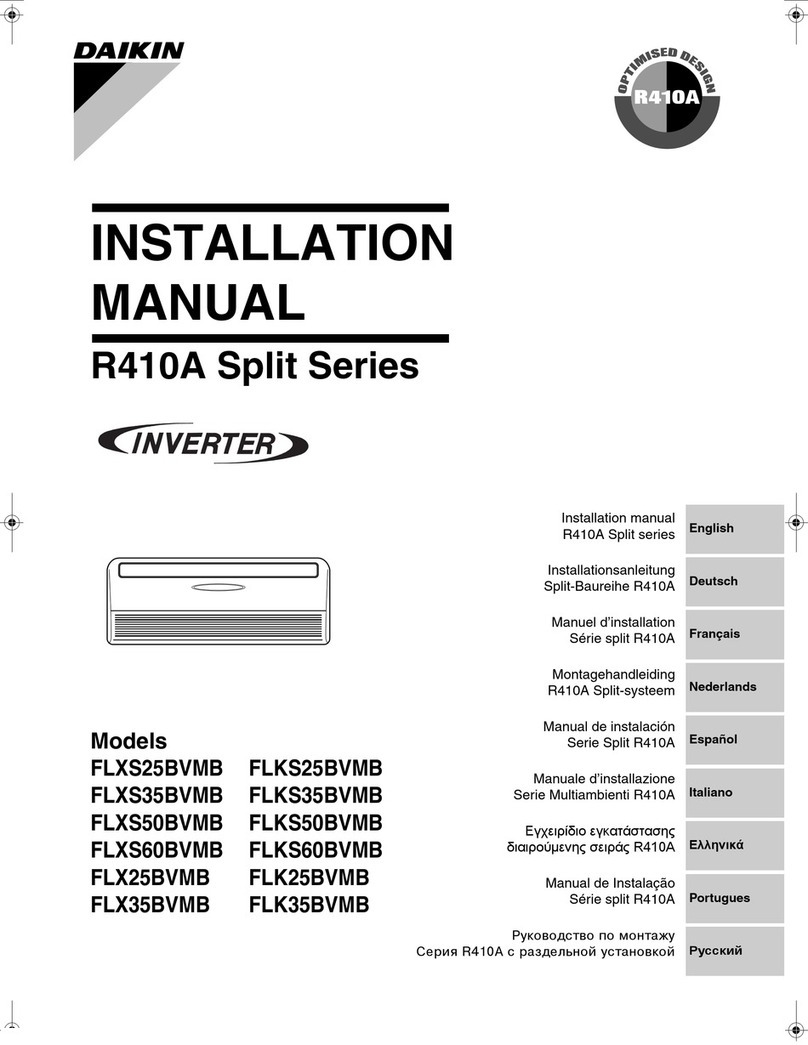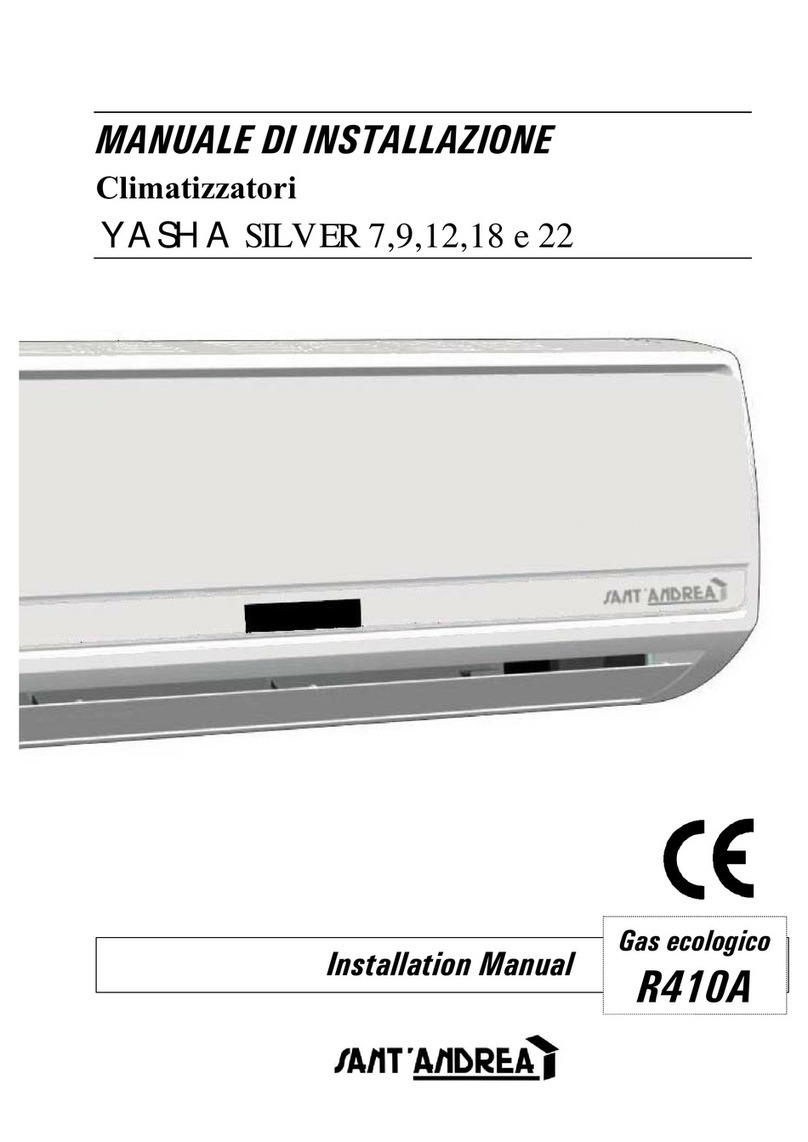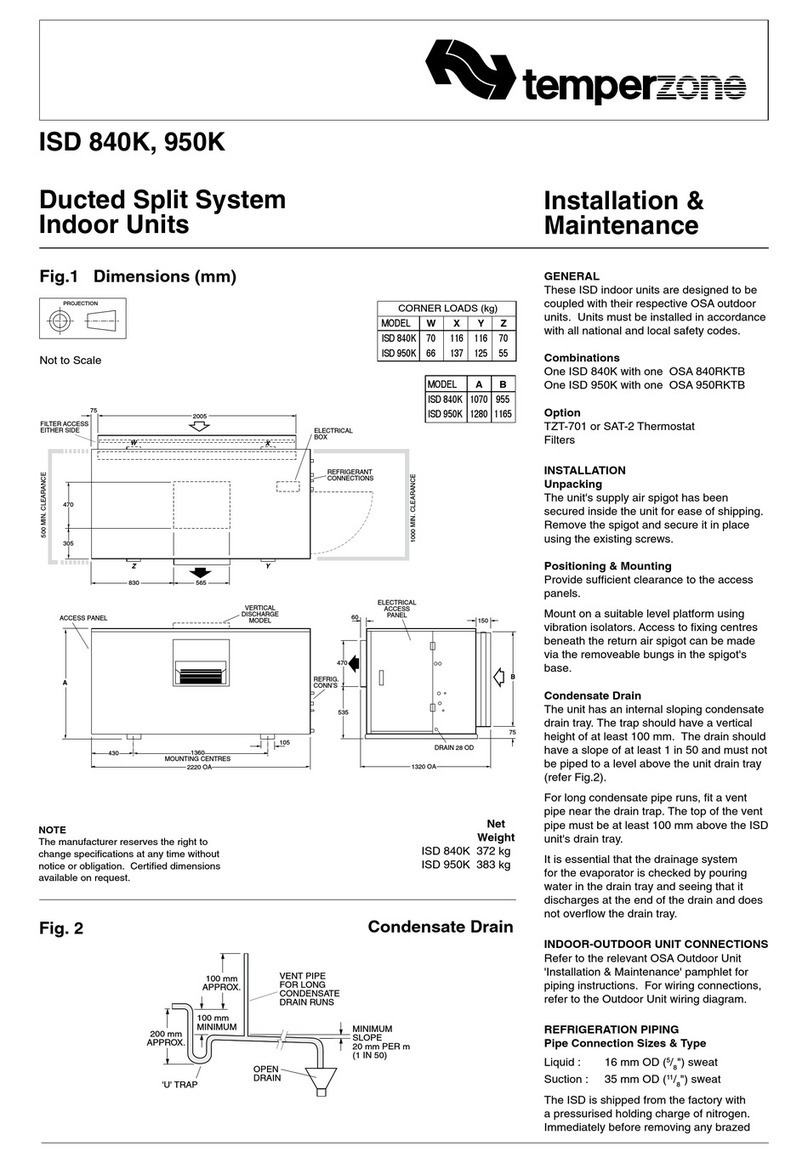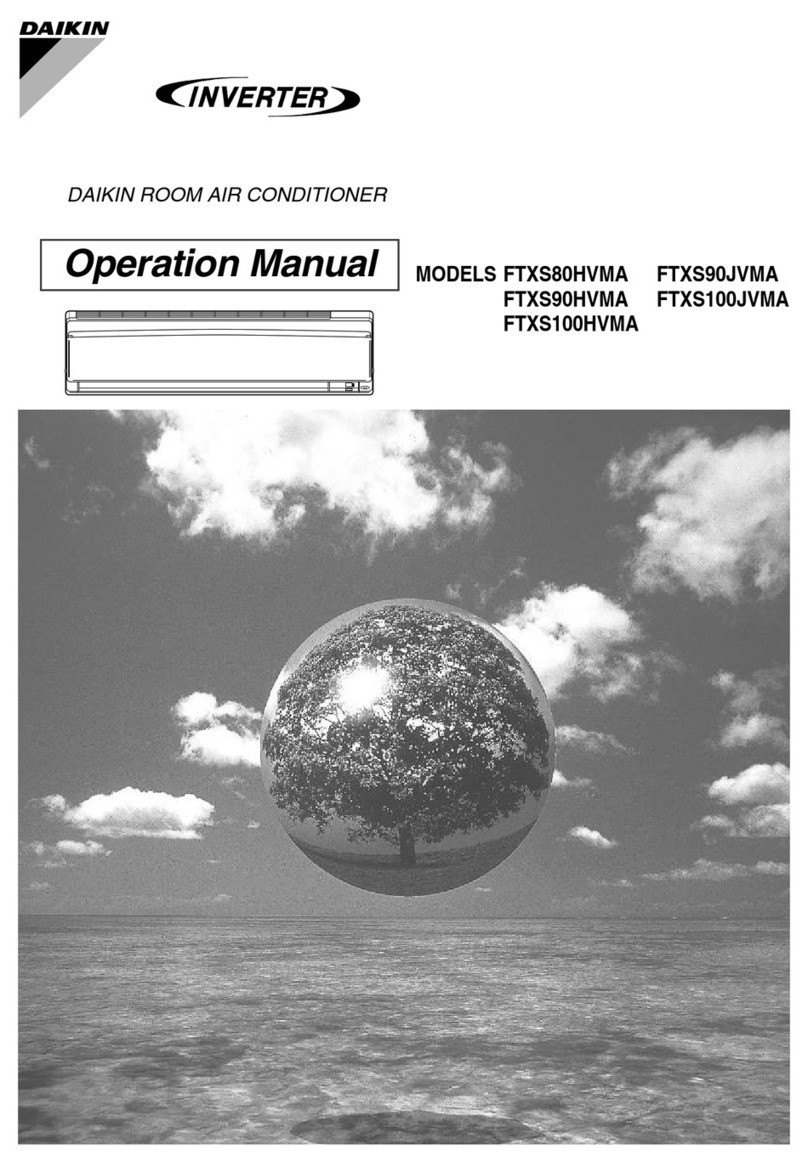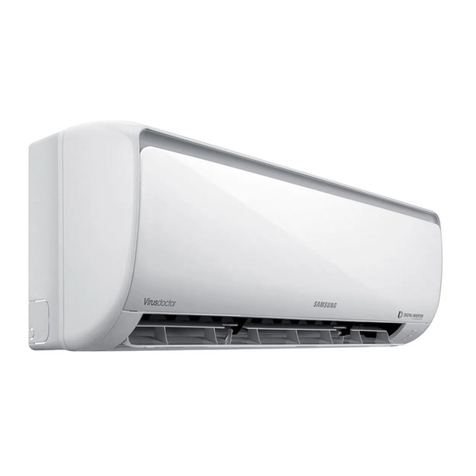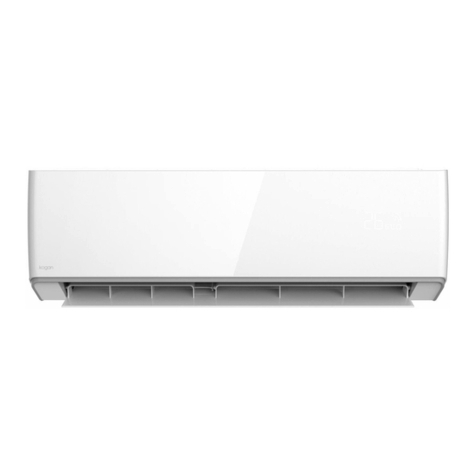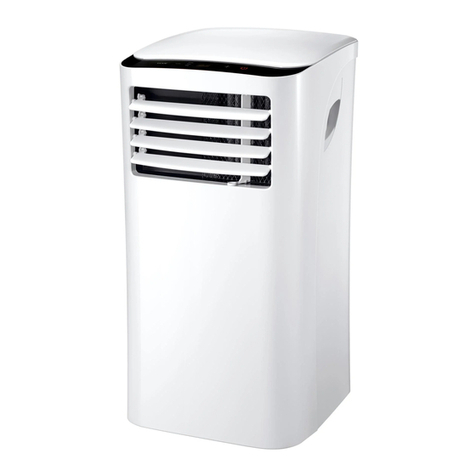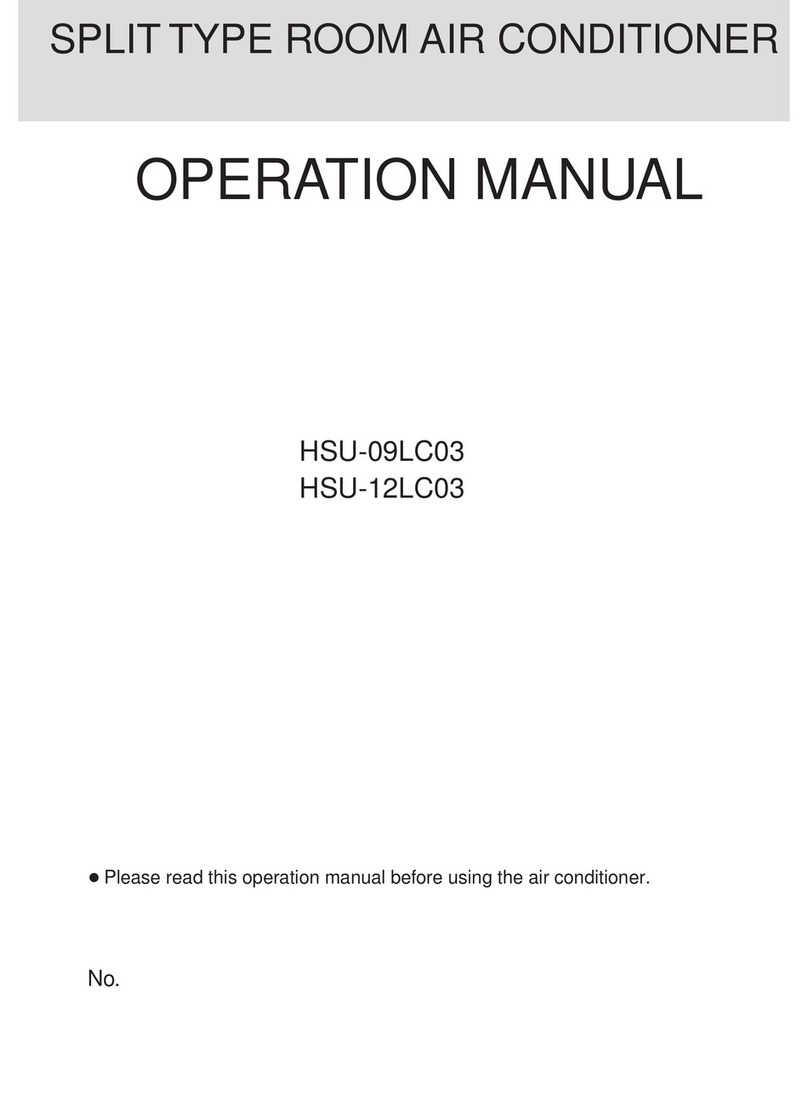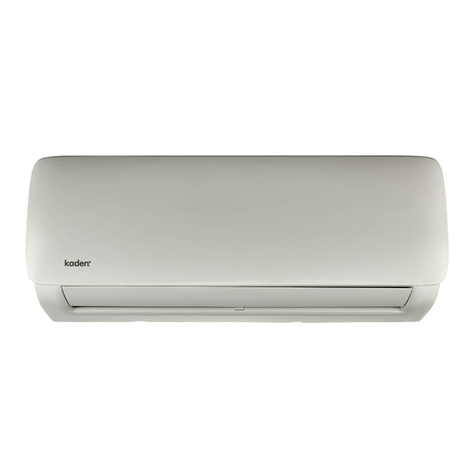English 10
5.3.1 Flare preparation
a) Cut the tube, using a tube cutter. Make sure that the cut
is perpendicular to the tube axis and free of burrs (see
Figure 11).
b) Slip the flared nut over the tube, secure the tube in the
flaring tool, as shown in Figure 12 and perform the flare
on the tube end. The tube projection length (A) from the
flaring block varies with tube diameter and shall be set as
indicated in the table. Apply few drops of refrigeration oil
to the tube before flaring.
CORRECT
90º
INCORRECT
Figure 11: Tube cutting
5.3.2 Connecting the tubes (See Figure 13)
Connect and tighten the flare nuts to the refrigeration valves
on the outdoor unit and to the male connectors of the indoor
unit. Coat the flared surfaces lightly with refrigeration oil to
improve sealing.
Note: First tighten manually the flare nuts, and then use a
wrench. See Table No. 2 for tightening torque values.
A (mm) TUBE OD Figure 12: Tube flaring
1.3
1.6
1.9
2.1
3/8”
1/2”
5/8”
3/4”
1. Copper Tube
2. Flaring Tool
5.3.3 Evacuation and setting in operation
a) Take two charging hoses equipped with a pushpin on one side, as shown in Figure 13. Connect
the two hose ends without the push-pin to the LOW (suction) and HIGH (liquid) valves of the
charging set; remove the guard caps from the service ports of the tree-way suction and liquid
valves and connect the hose ends with the push-pins to the service ports (see Figure 14). On
units without service valve on the liquid port, connect only the hose to the suction 3-way valve.
b) Connect the center hose of the charging set to a vacuum pump.
c) Turn on the vacuum pump and make sure that the low pressure gauge reading moves
from 0 cm Hg to 76 cm Hg; then evacuate the system for 10 minutes.
If gauge needle does not move from 0 cm Hg to 76 cm Hg, this indicate a leak. In this case,
tighten all connections; if leaking stops after the tightening of tubing connections, proceed from
step c. If leaking persists even after the connections had been tighten, detect the leak and
repair it; be sure to proceed only after all leaks have been eliminated.
d) Close the valves of both the suction and liquid ports of the charging set and turn off the vacuum
pump. Make sure that the gauge needle does not move for about 5 minutes.
e) Disconnect the charging hoses from the vacuum pump and from the service ports of both the
tree-way valves.
f) Replace the service port and valve caps of both tree-way valves and tighten them with a torque
wrench; see table of torque values in table No. 2.
CAUTION
When performing the following steps, avoid any exposure to the service valve ports; remember that the
system is under pressure.
g) Remove the valve caps (1) from both valves; position both valves to “Open” using an hexagonal
wrench (See Figure 14).
h) Replace valve caps of both three-way valves. Check for gas leakage with a leak detector or
soapy water.




















